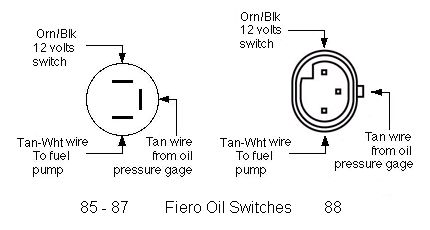When it comes to decoding the mysteries behind your car’s functionality, the intricacies of three-wire sensors play a pivotal role. In our previous discussions, we delved into various inputs like switches and thermistors, laying the groundwork for comprehending the complex web of car circuitry. Today, we’ll unravel the nuances of the analog three-wire sensor, a crucial component embedded within your car’s system.
Deciphering the Three-Wire Sensor: An Analog Marvel
Imagine a sensor that acts as the conduit between your car’s components and the central computer, relaying vital information in an analog format. This sensor, often referred to as a potentiometer, is omnipresent in crucial mechanisms like the Accelerator Pedal Position (APP) or Throttle Position Sensor (TPS), and even finds its place in monitoring the Exhaust Gas Recirculation (EGR) valve.
Understanding the Anatomy of the Sensor
Let’s delve into the schematic layout. Picture the Powertrain Control Module (PCM) as the nerve center, emitting a 5-volt reference. This voltage traverses a resistive sweep, meandering its way back into the PCM through a signal wire. This particular sensor, responsible for an analog representation, essentially gauges the position of the component it’s connected to.
Cracking the Operating Dynamics
The sensor’s function relies on a sweeping voltage range from 5 volts down to 0.1 volts or less. However, it’s not a simple 0 to 5 volts continuum. The computer needs a finite range to distinguish between normal functioning and potential faults. This operational range typically spans from 0.5 to 4.5 volts, enabling the system to flag anomalies.
Diagnosing the Sensor: From Bench to Car
Imagine this sensor as a bridge between the digital and analog realms. While bench testing provides expected values like 5 volts and 0.1 volts, it’s crucial to simulate various positions to validate the sensor’s response. This entails witnessing the voltage transition as the sensor moves, an action that’s more effectively visualized through an oscilloscope.
Troubleshooting Sensor Malfunctions
Faults in these sensors often manifest as unwanted resistances, leading to discrepancies in expected voltages. For instance, an open circuit might reflect 5 volts instead of the expected variation. Unwanted resistances on the ground or hot side can significantly impact the sensor’s readings.
Diagnostic Techniques: Unveiling Faults
Diagnosing faults in these sensors demands meticulousness. Utilizing a voltmeter instead of an ohmmeter becomes imperative as voltage variations account for dynamic situations induced by current flow and subsequent heat generation.
Digital vs. Analog: The Distinguishing Factors
Transitioning from analog to digital sensors, the landscape alters slightly. Digital sensors, marked by a Hall effect, offer a binary signal—a stark contrast to the analog’s sweeping voltage. These sensors cater to scenarios that demand precise position tracking, like window or seat movements.
Hall Effect Sensor Mechanics: The Core Principles
The crux of the Hall effect sensor lies in the interaction between magnets and veins within the sensor structure. As these veins move in and out of the magnetic field, they induce changes in the current flow, generating a distinct digital signal based on the position’s dynamics.
The Oscilloscope Advantage
While voltmeters suffice for analog sensors, digital sensors benefit from an oscilloscope’s prowess, showcasing the on-off transitions of the signal over time, depicting the movement or positioning of the monitored component.
Final Verdict: Integrating Insights
Understanding the nuances of three-wire sensors—be they analog or digital—paves the way for precise diagnosis and resolution of potential issues. These sensors, acting as the liaison between hardware and the central computer, are integral to ensuring your car’s optimal performance.




